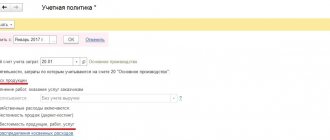What is a manufacturing defect?
The enterprise usually has a technical control department that is responsible for detecting defects and sending them for processing, if such a possibility exists. Marriage can be:
- internal, i.e. recorded by the company’s regulatory control services;
- external, i.e. already identified by the consumer.
Although any defect leads to increased costs, it is preferable for the company to identify it at the production or storage stages, since external defects always cost the company more, increasing direct production costs and reducing customer loyalty.
If it can be eliminated, it is divided into:
- correctable (when compliance with standards is achieved by additional processing);
- incorrigible (if there is no possibility of correction).
If the defect is considered correctable, then the product is modified, and the cost of the product is added to the costs of inventory, wages, etc.
In defective products that cannot be reworked, the presence of useful detachable parts is determined, they are received at the price of their intended use and used subsequently. The remaining parts are disposed of.
If a defect is discovered, the culprit is identified. This could be a supplier of low-quality raw materials or an employee of the company. A claim is sent to the supplier, and if the arguments put forward are recognized as justified, he pays compensation that will reduce losses due to defects. If an employee is found guilty, then the amount of damage is calculated, which is deducted in parts from his salary.
Accounting for defects in production
All information about defects is accumulated on account 28, in which all expenses are recorded by debit, i.e., the cost of defective products produced and the costs of their rework. For the loan - amounts that reduce the amount of losses from defects. For example, the cost of substandard products that will subsequently be used, the amount of damage recovered from the culprits - employees who allowed or suppliers of substandard raw materials.
The account balance reflects the amount of losses and is written off to production costs at the end of the month. Analytical accounting is carried out by workshops, types of products, reasons for defects and guilty parties.
Defects in production are reflected by postings:
| Operation | D/t | K/t |
| Defect detected: | ||
| In main production | 28 | 20 |
| In auxiliary production shops | 28 | 23 |
| In the service sector | 28 | 29 |
| Due to the received low-quality raw materials | 28 | 60, 76 |
| Costs for eliminating defects are reflected | ||
| Inventory materials released for product rework | 28 | 10 |
| Salaries of shop workers correcting defects | 28 | 70 |
| Salary contributions | 28 | 69 |
Conditions of the problem
Product output - Shop 1 (Table 1):
| № | Products | Issue volume | Quality | Planned price | Planned cost |
| 1 | Closet | 10 | Good products | 10 000 | 100 000 |
| 2 | Coffee table | 20 | Good products | 2500 | 50 000 |
| 3 | Closet | 1 | Marriage | 10 000 | 10 000 |
We will set specifications (material consumption standards) for manufactured products. Specifications are set in the item card on the “Specifications” tab:
Note. This tab is available only if the value “Production” is specified in the “Type of reproduction” field (the “Advanced” tab):
During the production process in Workshop 1, the following costs were collected:
Writing off defects in production: postings
On the credit of account 28, the amount of damage from the release of defective products, the cost of rejected but subject to processing products are recorded. We will demonstrate how to record the write-off of defects in production. Postings:
| Operation | D/t | K/t |
| Defects taken into account for the cost of intended use | 10, 41 | 28 |
| Partial losses from marriage were attributed to the culprits | 73, 76, 60 | 28 |
| The costs of reworking defective products were written off | 20, 23, 29 | 28 |
| At the end of the month, losses from marriage are written off | 20 | 28 |
If an external irreparable defect is identified, accounting in the company is carried out using the reserve account for warranty repairs - 96. If a company specializes in the production of warranty products, then it must create a similar reserve. The accounting entries will be as follows:
| Operation | D/t | K/t |
| Losses from defects are written off from the reserve | 96 | 28 |
| The portion of revenue attributable to defects is adjusted REVERSE | 62 | 90/1 |
| REVERSE the cost of defective products | 90/2 | 41, 43 |
A defect that does not arise through the fault of the employee is paid on the same basis as suitable products (Article 156 of the Labor Code of the Russian Federation). If the employee is to blame for the marriage, then:
— complete defects are not subject to payment;
— partial (correctable) defects are paid at reduced rates depending on the degree of suitability of the product.
The employee is also obliged to compensate the employer for direct actual damage caused to him (Article 238 of the Labor Code of the Russian Federation). In this case, the legislation provides for the following procedure for compensation:
- if the guilty employee is ready to voluntarily compensate for the damage caused, then, by agreement with the employer, compensation for damage in installments is allowed. In this case, the employee must give a written commitment indicating the specific terms of each payment (Article 248 of the Labor Code of the Russian Federation);
- if the employee does not agree to voluntarily compensate for the amount of damage caused, then the employer, on the basis of an order from the head of the organization (issued no later than a month from the date of final determination of the amount of damage caused), can recover it in an indisputable manner only if the amount of damage does not exceed the average monthly earnings of the employee. If the amount of damage exceeds the average monthly salary, then it can only be recovered in court (Article 248 of the Labor Code of the Russian Federation).
It must be remembered that the maximum amount of all deductions for each salary payment (by order of the manager) is 20 percent of the salary due to the employee (Article 138 of the Labor Code of the Russian Federation). Moreover, the amount of deductions from wages and other types of income of the debtor is calculated from the amount remaining after taxes are withheld. If an employee is deducted under several enforcement documents, then the amount of deductions cannot be more than 50% of earnings (Article 138 of the Labor Code of the Russian Federation).
Please note: if the defect is corrected by other employees, their wages do not change.
To account for defects in accounting, account 28 “Defects in production” is intended. The debit of account 28 collects the costs of identified defects (cost of irreparable, that is, final defects, costs of correction, etc.).
The credit of account 28 reflects the amounts attributed to the reduction of losses from defects.
Analytical accounting for account 28 is carried out for individual divisions of the organization, types of products, expense items, reasons and culprits of the defect.
When calculating income tax, losses from marriage are taken into account in full as part of other expenses (clause 47, clause 1, article 264 of the Tax Code of the Russian Federation).
Example. An employee of the main production committed an irreparable defect. According to the calculations compiled, the actual cost of rejected products is 7,000 rubles.
Rejected products are capitalized at the price of possible use - 500 rubles.
The average monthly earnings of an employee who has committed a marriage is 5,000 rubles.
The organization's accountant makes the following entries:
Debit 28 credit 02 (10, 69, 70...)
— 7000 rub. - reflects the actual cost of an irreparable defect;
Debit 73 Credit 28
— 5000 rub. — the employee’s debt for damages is reflected (in the amount of his average monthly earnings);
Debit 10, subaccount “Other materials”, Credit 28
— 500 rub. — rejected products were capitalized at the price of possible use;
Debit 20 Credit 28
— 7500 rub. (7000 - 5000 - 500) - losses from defects are written off as expenses of the main production.
V.D.Gorbulin, V.M.Kirsanova All types of benefits and compensation Source SPS Consultant+
Payroll entries
Home » Accountant » Payroll entries
Return to Payroll Payroll is calculated based on: - the remuneration system used at the enterprise; — information about established tariffs, salaries, piece rates; — information about the actual time worked by employees or the volume of products produced. According to labor legislation, wages are calculated and paid at least twice a month. Accrued amounts are recorded in the payroll (unified form No. T-51) or in the Payroll (unified form No. T-49) Payroll is reflected in the credit of account 70 “Settlements with personnel for wages” in correspondence with accounts for accounting costs depending on the nature of the work of a particular employee. 1. Wages are accrued to employees involved in the construction of fixed assets Accounting entry: D08 K70 2. Wages are accrued to employees involved in the invention of an intangible asset Accounting entry: D08 K70 3. Wages are accrued to employees involved in supplying the organization with materials Accounting entry: D10.15 K70 4. Accrued wages to employees of the main production Accounting entry: D20 K70 5. Accrued wages to employees of the auxiliary workshop Accounting entry: D23 K70 6. Accrued wages to general production personnel Accounting entry: D25 K70 7. Accrued wages to administrative and managerial personnel Accounting entry: D26 K70 8. Accrued wages to employees involved in product sales Accounting entry: D44 K70 9. Accrued wages to employees involved in dismantling equipment Accounting entry: D91 K70 10. Accrued wages to employees involved in liquidation of consequences of emergency circumstances Accounting entry: D91 K70 For accounting for settlements with employees of the organization The instructions for using the chart of accounts provide for the opening and maintenance of a synthetic account 70 “Settlements with personnel for wages”, which takes into account calculations for all types of payments due to employees, including: - for wages - in correspondence with accounts for recording production costs (selling expenses) and other sources (including other income and expenses). Postings are made for the amount of the basic and additional wages, respectively, of workers in the main production, workers in auxiliary production, workers in the workshop management and those carrying out other activities in the interests of the workshop as a whole, employees of the organization’s management apparatus, as well as service personnel employed in the central office of the organization and other work, of general economic importance, workers employed in service industries and farms, for the amount of wages of workers engaged in work related to the sale of products and their promotion to the market (for example, advertising agents), for the amount of wages of workers engaged in activities not associated with normal activities (for example, those involved in servicing leased fixed assets);
- for the payment of benefits - in correspondence with the account for accounting settlements with extra-budgetary funds; - for payment of vacation pay and remuneration for long service - in correspondence with account 96 “Reserves for future expenses”, etc. Account 70 is debited in correspondence with the cash accounts - cash and non-cash - depending on the form in which settlements with employees are made. Amounts accrued but not paid on time (due to the failure of recipients to appear) are reflected in the debit of account 70 “Settlements with personnel for wages” and the credit of account 76 “Settlements with various debtors and creditors” (sub-account “Settlements for deposited amounts”). . Analytical accounting for account 70 “Settlements with personnel for wages” is maintained for each employee of the organization. The main accounting entries for accounting for wages and salaries are the following: Debit of accounts 20 “Main production”, 23 “Auxiliary production”, 25 “General production expenses”, 26 “General business expenses”, 29 “Service production and facilities” Credit account 70 - for the amount basic and additional wages, respectively, for workers in main production, workers in auxiliary production, workers in workshop management and those carrying out other activities in the interests of the workshop as a whole, employees of the organization's management apparatus, as well as service personnel employed in the central office of the organization and other work of general economic importance, workers employed in service industries and farms; Debit account 44 “Sales expenses” Credit account 70 - for the amount of wages of employees engaged in work related to the sale of products and their promotion to the market (for example, advertising agents). Previously, the wages of such employees were written off as a debit to account 43 “Business expenses”; Debit of account 69 “Calculations for social insurance and security” Credit of account 70 - for the amount of accrued benefits for social insurance, pensions and other similar amounts; Debit account 91 “Other income and expenses” Credit account 70 - for the amount of wages of employees engaged in activities not related to normal activities (for example, those involved in servicing fixed assets leased out); Debit account 96 “Reserves for future expenses” Credit account 70 - for the amounts of wages accrued from the previously created reserve (for example, vacation pay, remuneration for long service, etc.); Debit of account 97 “Deferred expenses” Credit of account 70 - for the amount of wages of employees involved in carrying out deferred expenses (for example, repairing fixed assets); Debit account 99 “Profits and losses” Credit account 70 - for the amount of wages accrued to employees involved in eliminating the consequences of emergency circumstances; Debit account 70 Credit account 50 “Cash” - for the amount of payments made; Debit of account 70 Credit of account 68 “Calculations for taxes and fees” - for the amount of personal income tax withheld from the employee; Debit of account 70 Credit of account 73 “Settlements with personnel for other operations”, subaccount “Settlements for compensation of material damage”,
- for the amount of deductions made to compensate for material damage or to pay off debt on a loan issued; Debit account 70 Credit account 94 “Shortages and losses from damage to valuables” - for the amount of material damage due to shortages attributed to the perpetrators (without crediting the amounts of damage to account 73). Amounts accrued but not paid on time (due to the failure of recipients to appear) are reflected in the debit of account 70 “Settlements with personnel for wages” and the credit of account 76 “Settlements with various debtors and creditors” (sub-account “Settlements for deposited amounts”). . Analytical accounting for account 70 “Settlements with personnel for wages” is maintained for each employee of the organization. When making settlements for remuneration of employees in kind, the following features should be taken into account: - labor legislation does not prohibit settlements with employees in kind, but limits the size of such settlements - no more than 20% of accrued amounts; - when transferring products of own production to employees, its price is determined in accordance with the requirements of Art. 40 of the Tax Code of the Russian Federation, that is, in the general case - at the level of market prices; — the cost of products issued to employees on account of arrears of wages is subject to personal income tax and the unified social tax on a general basis. Accounting for deductions from employees' wages Current legislation provides for the possibility and necessity of making deductions from amounts due to employees for payment. The retention procedure is established by departmental regulations. In accordance with Art. 137 of the Labor Code of the Russian Federation, deductions from wages can be made only in cases provided for by law. In this case, by order of the organization’s administration, the following deductions may be made. 1. Refund of amounts overpaid due to accounting errors. In accounting, such deduction is formalized by the entry: Debit of account 70 “Settlements with personnel for wages” Credit of accounts for recording production costs or expenses (20 “Main production”, 23 “Auxiliary production”, 44 “Sales expenses”, etc. ) - reversed. It should be borne in mind that in the case where wages are overpaid to an employee as a result of not a counting error, but, for example, a semantic one or due to insufficient qualifications of an accounting employee, this amount cannot be recovered from this employee. In this situation, recovery, as a rule, is made from the employee who is guilty of making such a mistake. At the same time, in accounting, the attribution of overpaid amounts to shortages and their collection are carried out in the manner established for accounting for the amounts of damage caused to the organization. 2. Repayment of unspent and not returned in a timely manner advance payment issued for a business trip or transfer to another locality, for business needs, unless the employee disputes the grounds and amount of the withholding. In this case, the accounting entry is drawn up: Debit account 70 Credit account 71 “Settlements with accountable persons”
- for the amount previously issued on account and not repaid on time. In the above cases, the administration has the right to make an order to withhold no later than one month from the date of expiration of the period established for the return of the advance, repayment of debt, or from the date of incorrectly calculated payment. 3. For unworked vacation days when an employee is dismissed before the end of the working year for which he has already received vacation. Deduction for these days is not made if the employee is dismissed on the grounds specified in paragraphs 1 and 2, 3 and 4 of Part 1 of Art. 81, paragraphs 1, 2, 5, 6 and 7, part 1. In accounting, such deductions are formalized similarly to deductions upon detection of a counting error. 4. Compensation for damage caused by the fault of an employee of the organization in an amount not exceeding his average monthly earnings (Article 241 of the Labor Code of the Russian Federation). When making deductions, you should take into account the restrictions on the amount of deductions from wages established by Art. 138 of the Labor Code of the Russian Federation: - for each payment of wages, the total amount of all deductions cannot exceed 20%, and in cases specifically provided for by law - 50% of the wages due to the employee; - when deducting from wages under several executive documents, the employee, in any case, must retain 50% of his earnings. These restrictions do not apply to deductions from wages when serving correctional labor, collection of alimony for minor children, compensation for harm caused by an employer to an employee’s health, compensation for harm to persons who suffered damage due to the death of a breadwinner, and compensation for damage caused by a crime. The amount of deductions from wages in these cases cannot exceed 70%. Deductions from payments that are not subject to collection in accordance with federal law are not allowed. 5. Amounts withheld from wages on behalf of employees for the payment of insurance payments under voluntary insurance contracts through non-cash payments to insurance authorities. In accounting, such deductions are reflected by the following entries: Debit account 70 Credit account 76 “Settlements with various debtors and creditors”, subaccount “Settlements for property and personal insurance” - for the amount of deductions made; Debit of account 76 Credit of account 51 “Settlement accounts” - for the amounts of insurance payments transferred from the budget account to the account of the insurance body. Withholding insurance payments from employees' wages and transferring them to the accounts of insurance authorities are made on the basis of lists and instructions submitted to the organization's accounting department by the insurance agent. 6. Trade union membership fees for a non-cash payment system with trade union organizations. Withholding of trade union dues is carried out in the presence of written applications from trade union members with a request to accept their trade union dues by bank transfer. In accounting, the deduction and transfer of membership fees are reflected in the same manner as the reflection of insurance premiums. In this case, an additional sub-account is opened to account 76. 7. Amounts for writs of execution - alimony for the maintenance of minor children and compensation for damage caused to the organization. When deducting amounts under writs of execution, an entry is made: Debit account 70 Credit account 76 - for the amount of alimony deductions made; Debit account 76 Credit account 51 - for the amount of withheld alimony transferred to the recipient (or credit account 50 "Cash" - if alimony is paid directly from the organization's cash desk); Debit of account 70 Credit of account 73 “Settlements with personnel for other operations”, subaccount “Settlements for compensation of material damage” - for the amount of deductions to pay off material damage caused to the organization. Working capital Fixed assets Intangible assets Balance sheet Maternity leave Travel expenses
| | Up
View more:
- 70 68 posting Transfer of personal income tax and contributions On the day of salary payment, the organization is obliged to pay personal income tax and insurance contributions for ...
- What are personal payroll accounts? Data to be filled in. Typically, employees' personal payroll accounts are maintained by the company's accountant. To organize...
- D 51 to 62 posting Accounting for settlements with customers during sales ★ Best-selling book “Accounting from scratch” for dummies (understand how...
- Storage period for salary documents Storage period for salary documents Any organization conducting any economic activity must...
- Insurance premiums accrued posting Concept and types of extra-budgetary funds An extra-budgetary fund is a government body whose financial resources are generated outside...








